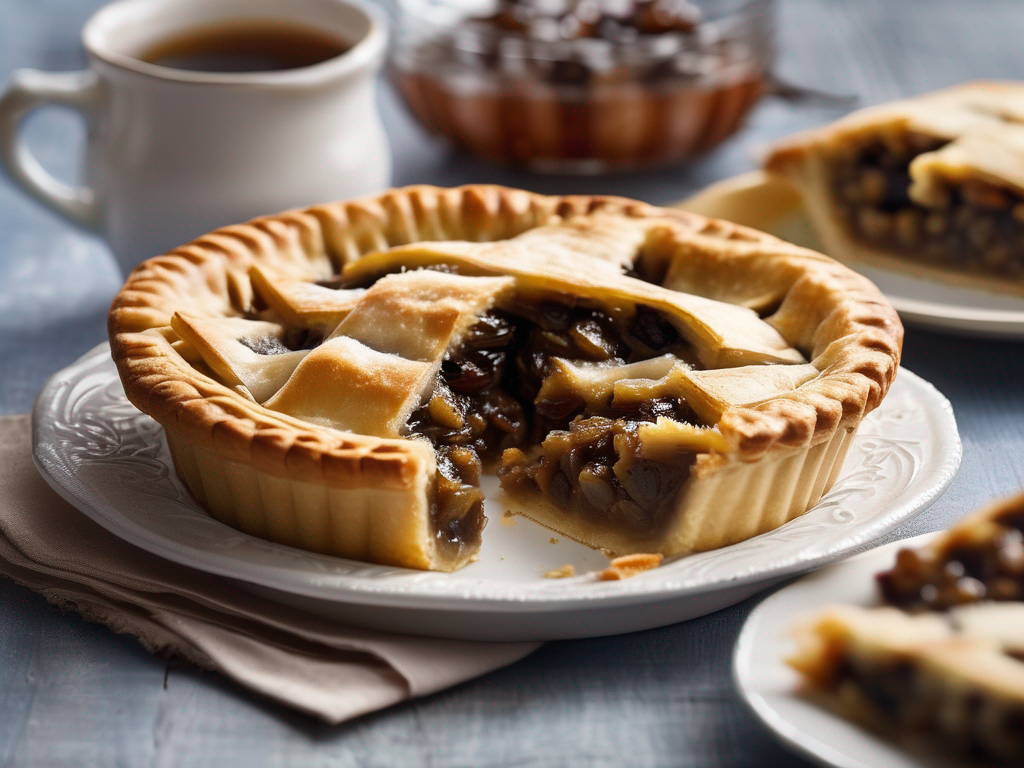
The Best Way to Store Mincemeat Pie Baked for Optimal Freshness
Get Your Free Food Safety Cheat Sheet
30 most common foods with instant answers. Print it and stick it on your fridge—completely free!
The Best Way to Store Mincemeat Pie Baked for Optimal Freshness
Are you a fan of mincemeat pie baked to perfection? This classic dessert is a favorite during the holiday season and beyond. However, ensuring the freshness and flavor of your mincemeat pie after baking is crucial for enjoying it to the fullest. In this guide, we'll explore the best practices for storing mincemeat pie baked for optimal freshness. (Mincemeat pie baked)
Understanding Mincemeat Pie Baked
Before delving into storage tips, let's briefly discuss what mincemeat pie baked entails. Mincemeat pie is a traditional British dessert that typically consists of a mixture of dried fruits, spices, suet, and sometimes meat. The filling is encased in a pastry crust and baked until golden brown. The rich, flavorful filling combined with the buttery crust makes mincemeat pie a delightful treat for special occasions or everyday enjoyment.
Key Ingredients in Mincemeat Pie
- Dried fruits such as raisins, currants, and sultanas
- Mixed spices like cinnamon, nutmeg, and cloves
- Suet or vegetable shortening
- Sugar and sometimes alcohol for flavor
Best Practices for Storing Mincemeat Pie Baked
Proper storage is essential to maintain the quality and taste of your mincemeat pie. Follow these guidelines to ensure optimal freshness:
1. Cool Completely Before Storing
- Allow the mincemeat pie to cool completely at room temperature before storing it.
- Placing a hot pie in the refrigerator can create condensation, leading to a soggy crust.
2. Use Airtight Containers
- Transfer the cooled mincemeat pie to an airtight container or wrap it tightly with plastic wrap.
- Airtight storage helps prevent the pie from drying out and absorbing odors from the refrigerator.
3. Refrigerate Promptly
- Store the mincemeat pie in the refrigerator within 2 hours of baking to prevent bacterial growth.
- Refrigeration helps maintain the freshness of the pie and extends its shelf life.
4. Properly Label and Date
- Label the storage container with the date of baking to track freshness.
- Proper labeling helps you identify how long the mincemeat pie has been stored and when it should be consumed.
5. Store in the Freezer for Long-Term Storage
- If you want to store the mincemeat pie for an extended period, freeze it.
- Wrap the pie securely in plastic wrap and aluminum foil before placing it in the freezer.
Safety Tips for Storing Mincemeat Pie
Ensuring food safety is paramount when storing mincemeat pie baked. Follow these safety tips to prevent foodborne illnesses:
1. Avoid Cross-Contamination
- Keep the mincemeat pie away from raw meat, poultry, and seafood in the refrigerator.
- Cross-contamination can lead to the transfer of harmful bacteria to the pie.
2. Check the Temperature
- Maintain a refrigerator temperature of 40°F (4°C) or below to keep the mincemeat pie safe.
- Freezer temperature should be set at 0°F (-18°C) or lower for optimal storage.
3. Follow the Two-Hour Rule
- Refrigerate the mincemeat pie within 2 hours of baking to prevent bacterial growth.
- Discard any pie that has been left at room temperature for more than 2 hours.
Conclusion
Proper storage is key to maintaining the freshness and quality of mincemeat pie baked. By following the guidelines outlined in this guide, you can enjoy delicious mincemeat pie for longer periods without compromising its flavor. Remember to cool the pie before storing, use airtight containers, refrigerate promptly, and follow safety tips to ensure a safe and enjoyable dining experience.
For more delicious recipes and food storage tips, visit [mincemeat pie baked](/food/mincemeat pie baked). (Mincemeat pie baked)
Authoritative Food Safety References
These agencies and university labs inform every tip and health precaution we publish.
USDA FoodKeeper – Cold Storage Guidelines
Official refrigerator, freezer, and pantry timelines maintained by the U.S. Department of Agriculture.
Visit USDA FoodKeeperFDA Produce Safety Rule & Grower Guidance
Field-to-fridge handling practices that prevent contamination of fruits, vegetables, and leafy greens.
Visit FDA Produce SafetyCDC Foodborne Illness Prevention Hub
Surveillance-backed guidance on pathogens, symptoms, and steps to reduce foodborne illness risk.
Visit CDC Food SafetyUC Davis Postharvest Technology Center
University research detailing optimal storage atmospheres for produce after harvest.
Visit UC Davis PostharvestPenn State Extension – Home Food Preservation & Safety
Peer-reviewed extension bulletins on safe canning, chilling, and reheating practices.
Visit Penn State ExtensionGet Your Free Food Safety Cheat Sheet
30 most common foods with instant answers. Print it and stick it on your fridge—completely free! Want more? Upgrade to the complete guide with 70+ foods.
Scan your food directly and get instant safety info using our AI-powered camera feature.